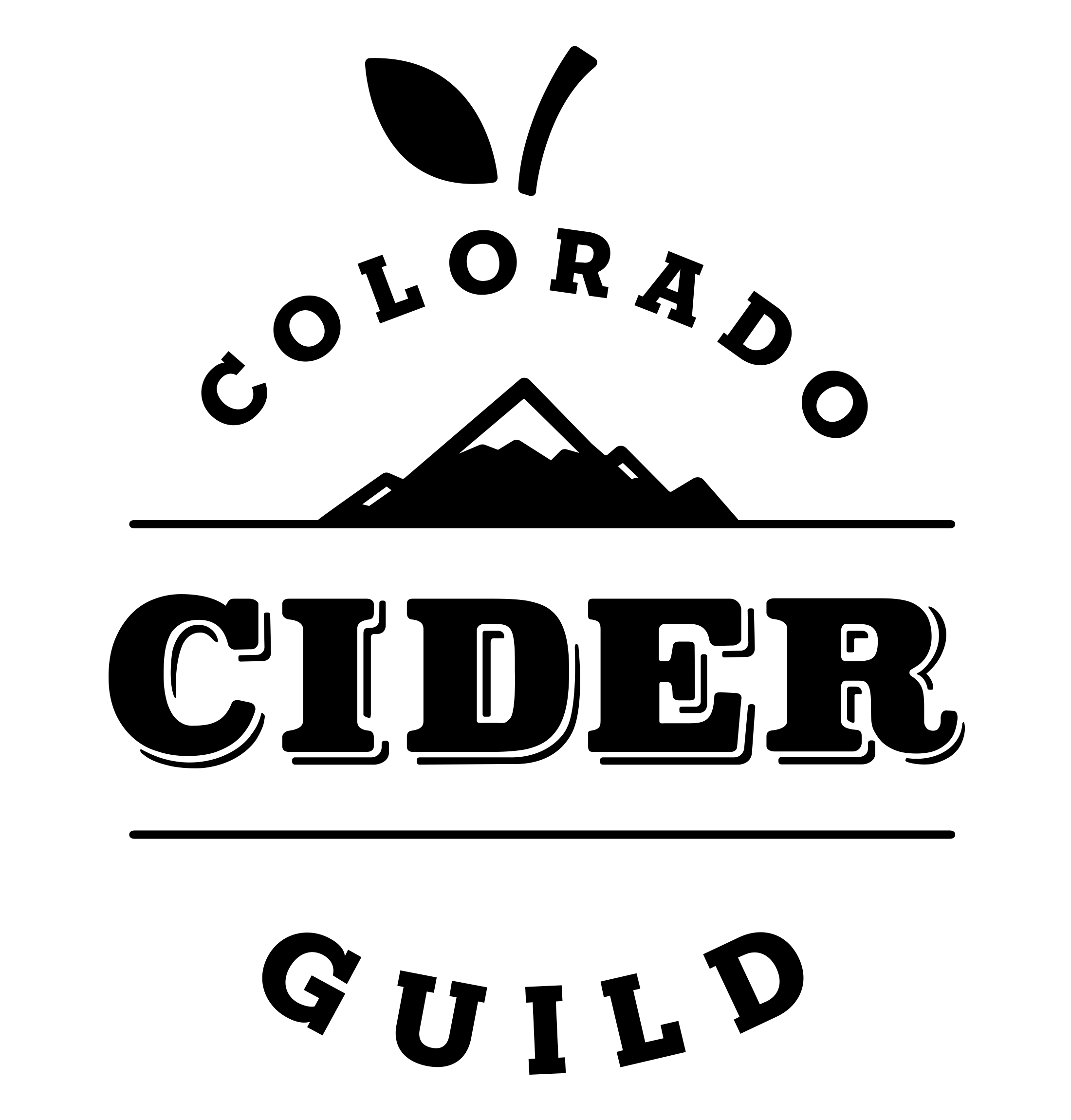Here's a little story about a tasty crabapple -
One day in 2014, Dan stumbled upon two apple trees growing the most interesting crabapples in a historic neighborhood in Boulder. They were tart, tannic, beautifully perfumed and epically water cored. The trees were 30 feet tall and very old, maybe a century or more. Their trunks were hollowed, they were nearing the end of their lives.
The cider from the fruit was exquisite so we sent it to the cider competition at Franklin County Cider Days in Massachusetts. The cider won Best In Show, earning the most prestigious amateur prize in the cider world. We knew we were on to something.
Dan suspected the apple was a Virginia Hewes Crabapple, one of America's most important cider making apples. It had all the right characteristics but some folks doubted it. He couldn't be sure so we called the apple and subsequent cider - Boulder Hewes.
We carried on cidermaking for years, unsure whether we would ever know the apple's identity. Through Dan's involvement with CU's Boulder Apple Tree Project, he met an academic researcher, Courtney Meier. When they spoke about the Boulder Hewes, Courtney became intrigued and offered to help DNA test the apple. We recently received the following results:
"Morning! I just got the DNA results back and both your 'Boulder' Hewes Crab and my Virginia Hewes Crab came back an identical match. They also matched a third Virginia Hewes Crab sample that the lab got from Ontario. Cool stuff! The guy who leads the lab also discovered that both our samples and the Ontario tree are triploids, and he passed along a 1936 Ph.D. dissertation paper from Iowa State that describes a triploid 'Virginia Crab' that may be distinct from the 'Virginia Hewes Crab' that is described in online sources as being diploid. So it's possible that the trees we have are a triploid sub-cultivar, but the naming is a bit muddled."
What does all that mean? It means the two, large trees we discovered in Boulder were planted there intentionally, perhaps a hundred years ago or more, to make cider. They brought scion wood westward and planted these trees. The trees survived weather and population growth to be 're-found' in 2014 and are now being used for their original intent - producing amazing cider. It also means that there is still a bit of a mystery about the Virginia Hewes crabapple... and thank goodness because what is life without a mystery to enjoy!
AND we just foraged more yesterday! The guys are sorting these beauties for another vintage of the our award winning Boulder (Virginia) Hewes!










